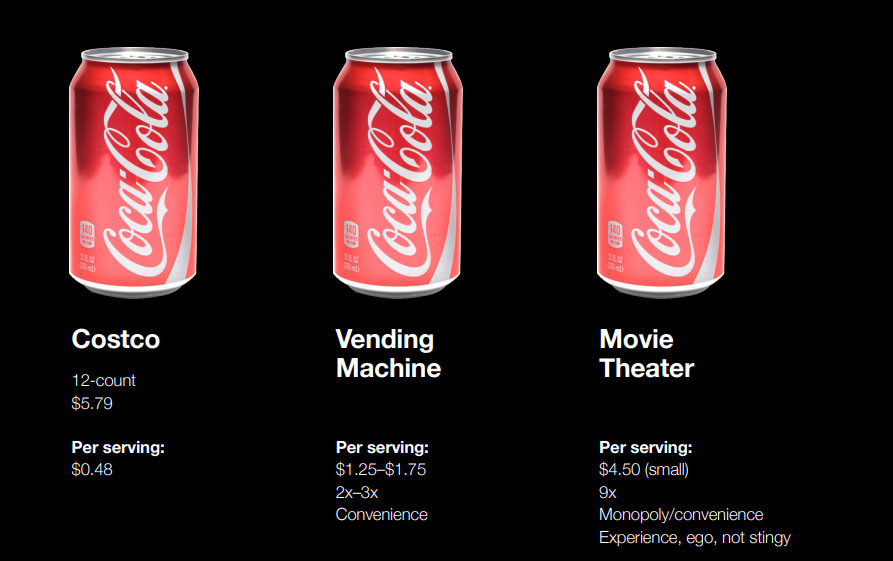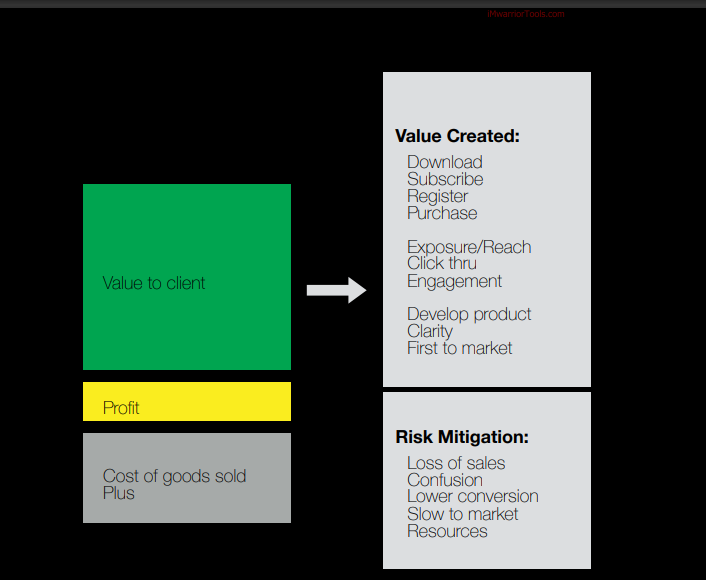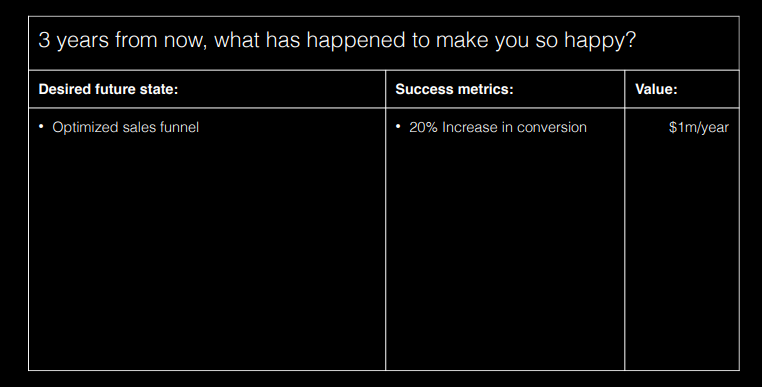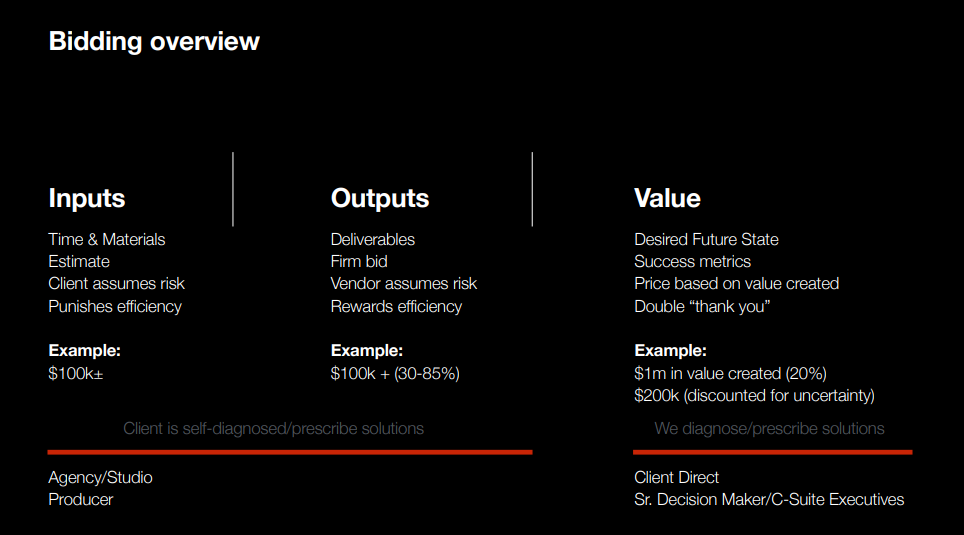Kay, how do I do value-based pricing? (Pricing 101: Part 3)
How I price projects.
It’s in the name get it? You get paid according to the value you create.
You price the client not the job. Didn’t get it? Let me put it in more fancier terms: Prices are set primarily according to the perceived or estimated value of a product or service to the customer rather than according to the cost of the product or historical prices.
Now all value is subjective: The same website/logo/design/art can be worth different to different people. Value, like beauty, art, and fairness is in the eye of the beholder. <TODO: Add Shakespearian quote here for extra dramatization>.
The same bottle of coke is worth different to different people at different places:

Fun (&useless&outOfPlace) Fact: Did you know when people were given to blind taste coke and Pepsi, they chose Pepsi as the better tasting one, but without the blindfold they chose coke? Now THAT is the power of branding.
Don’t worry I’m neither a Pepsi guy nor a coke guy. I don’t drink any carbonated drinks to be precise (I’m a weirdo I know). Mostly because they make me burp, and me likes no burping. I know I know…
Anyways, where were we... Yeah: Price based on perceived benefits to customer not cost to produce.
So how do you do value-based pricing?
- Determine business goals/objectives
- Determine business needs and individual wants. What do they have to lose? What do they have to gain? Prestige… Recognition… Peace of mind… Opportunity cost…?
- Stay in the facilitation mindset and ask questions, avoid providing solutions
- Ask the 3-year dan-sullivan question, follow up and ask clarifying questions.
- Reflect back on what you heard.
- Determine success metrics.
- Determine value.
- Offer pricing guidelines

In short define success for you → define the success metrics and how the success will be measured→ And define how valuable is achieving this to them→ Then you determine your price.

Watch this video of Chris Do doing it so goddam effortlessly.
What happens when you price this way?
- You elevate the conversation from tactical to strategic.
- You shift the highlight to the future desired state.
- You focus on solutions that generate financial/emotional gain for clients.
- You stay in the facilitation mindset (asking questions vs providing answers).
- You “Flip” and go from vendor to consultant.
Repeat this after me:
“I build value. And as a designer/developer/creative I understand that my clients will make more money from my work than I ever will, especially if I do it right."
And quite honestly, that’s the key to pricing work. Understanding that the people you’re doing it for stand to benefit considerably if you do it right.
And that’s why you charge them according to the value of the work. Because you make money for people, you solve real-world business problems, you don’t make pretty websites, you don’t make nice designs, you don’t make apps, you make value for your clients and their customers and in return, you charge a small fraction of the value that is created.
It’s simple business 101: The more you provide value for your clients, the more they profit. Their businesses do better, and they’re happier. That’s the backbone of value-based pricing—your primary driver is what you can achieve for your customers. The more profit a.k.a value you can create for them, the more of that profit you’re entitled to. Value-based pricing is the intersection of how much value you can create for a customer and the amount you ask for in return.
So to sum up:

Pro tips:
- Generally, 10 to 20 per cent of the value generated is a fair share that
- Have something like MLoE (Minimum Level Of Engagement). You can calculate it depending on your burn rate/monthly expenses. As you start getting more projects you need to choose. For example if you decided that the minimum level of revenue being generated from the services that you provide or the product that you’re working on should be around $100k for your services to remain profitable and so 20% of $100k = $20k. It’s just the simple logic that you don’t grow from $100k to $1M by getting more clients. Your time is limited. You do that by solving bigger and bigger problems.I have this policy that if anything is below my MLoE, a) I either don’t take it. or b) In case that idea is too interesting and I badly wanna do it. I do it for free. That’s just a strict policy that I had to set for myself so I don’t suffer from shiny object syndrome.
- From Dan Malls' book: “The largest factor in your current value is your ability to walk away from a prospect. If your bank account is full, your portfolio is stacked, and you’re incredibly fulfilled in the work you’re doing, a prospective client would have to pitch you on taking their project. If you won’t take their project for $10K, the only recourse they have is to offer you $20K, then $50K, then $100K, until you finally take it—or don’t.”
- Some people have this misconception that value pricing is that it’s about charging the largest amount of money possible. It’s not. If the value of what you’re doing is small, it’s okay for the price to be small. If the value is immense, the price should follow suit.
- Value is also in the things like speed, and other things clients are willing to pay for: friendliness, integrity, dependability, convenience, image, service, innovation, and knowledgeable salespeople. These are all things that you can—and should!—put a price on.
- In some of my projects I just charge my small initial booking fee, the rest I get paid later. The more I help them generate the more I generate. Sell levels of risk reduction to your client. As a general rule the more risk you take, the more profit you walk away with. (More on this for a later post)
- And lastly ask yourself: Can you provide that value? Be honest The magic in pricing is when you can match what your customer values with how valuable you are. That’s why you don’t see a lot of students doing work for Fortune 500 companies: students aren’t often capable of creating all the value that’s possible. The balance of value is what makes for the most productive relationships; iron, after all, sharpens iron.
Any cons…?
As you start using value based pricing, your loss rate on proposals my gone way up—you might land significantly fewer projects than when you had a standard hourly rate. Value pricing is scary, both for you as the provider and for the customer. It requires trust on both sides. It’s risky for both parties. But what value pricing does is that it filters out the people who really wanna work with you, it separates the price buyers from value buyers.
You’re not going to be right for every client. Not every client is going to be right for you. Value pricing helps bring that to light more quickly, because it forces you to think deeply about whether or not you can bring value to the table. Value pricing usually isn’t for customers who want to rush into things. And it’s not helpful if all you’re interested in is running the meter as soon as someone calls you.When you do find the client who believes in the value you can offer them, and you can confidently create that value, you will both profit tremendously.- Pricing Design By Dan Mall.
Coming soon: Subscription-Based Pricing.
Resources
Like any great article (It’s great, I know…) this one is made up of other great articles and books:
- Mastering Value Conversation 2Bobs Podcast (also a great podcast in general)
- Win Without Pitching Manifesto by Blair Enns
- Pricing Creativity by Blair Enns ( if I had to just recommend one this is it)
- Pricing Design, A Book Apart By Dan Mall (The most to the point and actionable)
- Jonathan Stark's “Hourly Billing is Nuts” (also check out his podcast, it's a hidden gem)
- The futur’s Business Bootcamp (was the best course I took last year) and their youtube channel most value on return.
Other great books for more reading:
- Implementing Value Pricing, Ronald J. Baker
- Management Challenges for the 21st Century, Peter F. Drucker
- Positioning for Professionals, Tim Williams
- Predictably Irrational, Dan Ariely
- Pricing for Profit, Dale Furtwengler
- Pricing with Confidence, Reed K. Holden and Mark R. Burton
- Value-Based Fees, Alan Weiss
- Work for Money, Design for Love, David Airey